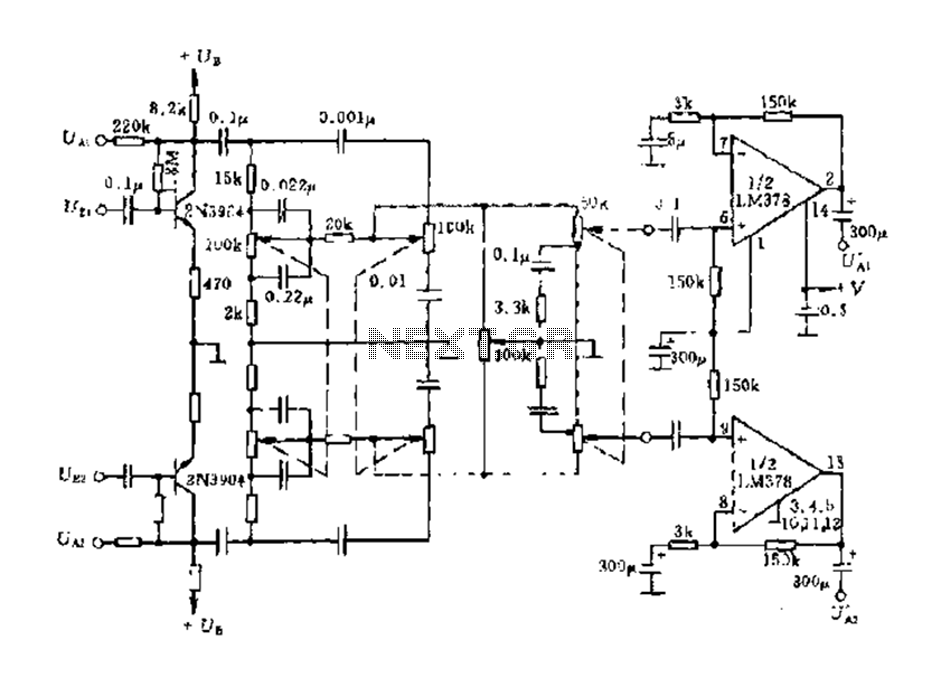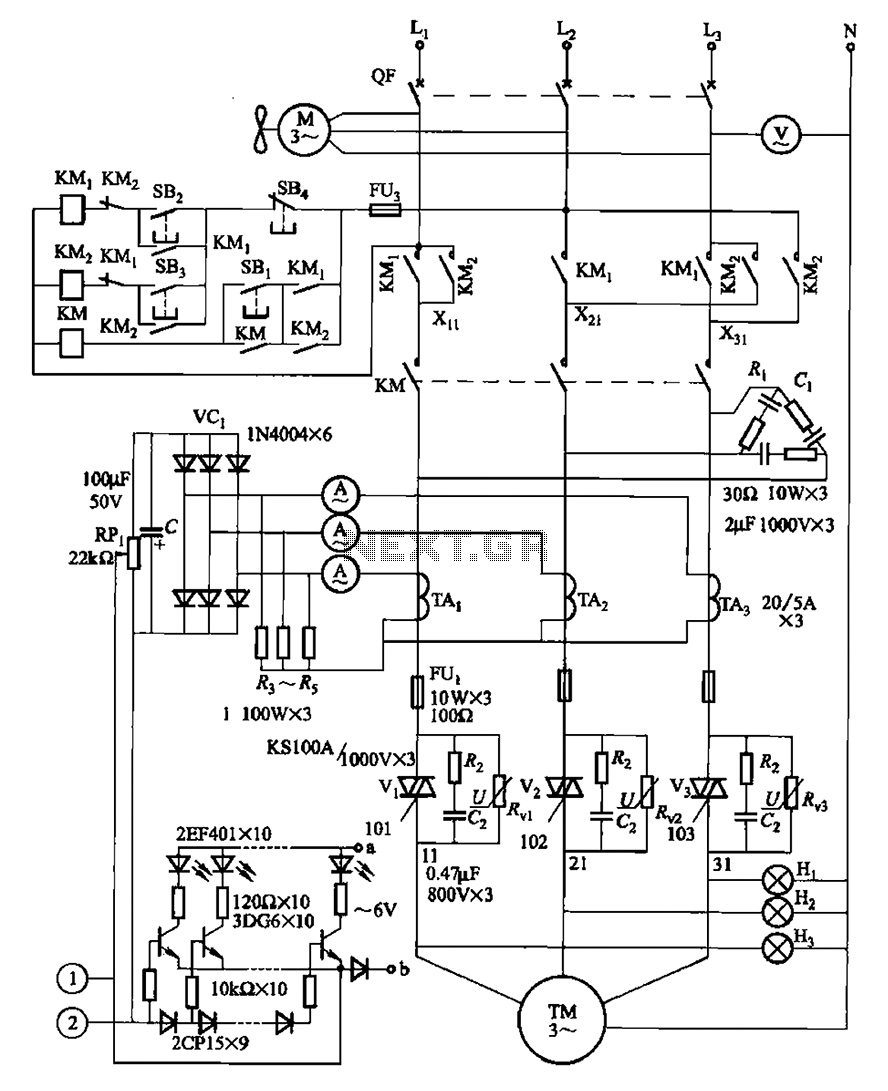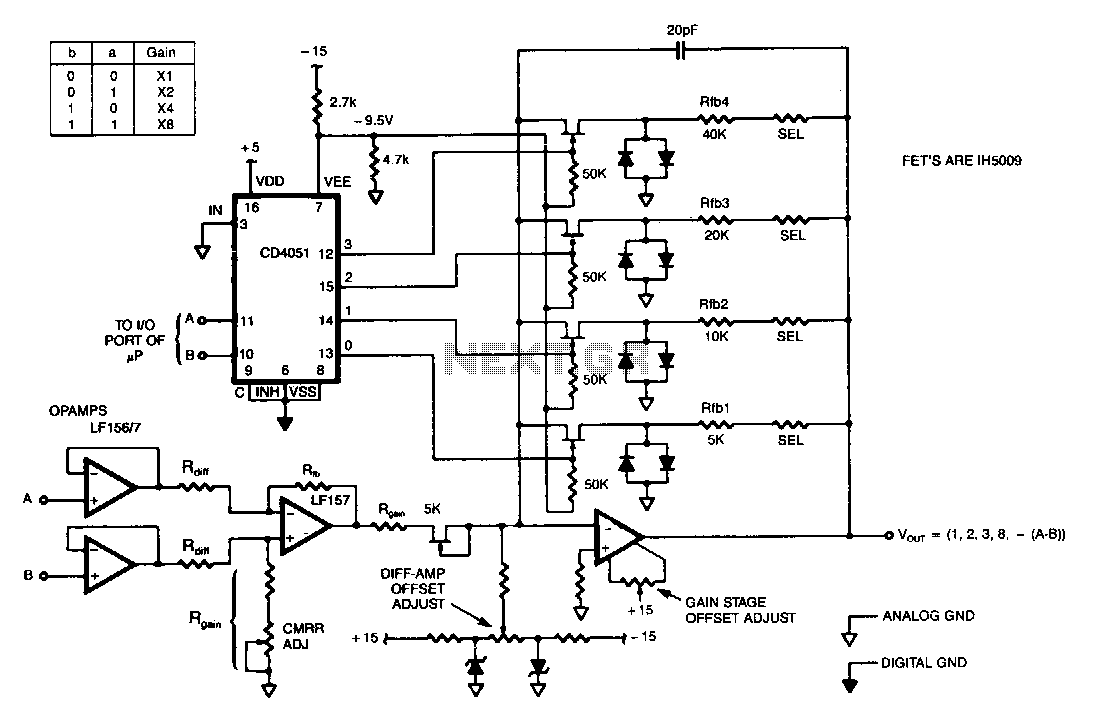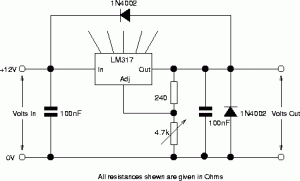
LM3886 two-channel audio amplifier circuit diagram

The dual-channel circuit features the LM378 dual operational amplifier and operates with a supply voltage of 24V, supporting an 8-ohm load (or 16 ohms). Each channel delivers an output power of 4W. The circuit includes internal current limiting and thermal overload protection, which can cut off the output when necessary. Additionally, it incorporates a power supply that automatically adjusts the bias voltage. The design also offers a ripple rejection ratio, excellent channel separation, high input impedance, and a minimal number of external components. This circuit is particularly well-suited for stereo applications, including stereo tape recorders and FM/AM stereo audio power amplifiers for radio. Furthermore, it features a high input termination action and controls for bass and treble, allowing for significant audio enhancement.
The described dual-channel circuit utilizing the LM378 operational amplifier is engineered for efficient audio amplification, delivering 4W per channel at a supply voltage of 24V. The choice of an 8-ohm load, or alternatively 16 ohms, allows for compatibility with various audio devices, ensuring versatility in application. The internal current limit and thermal overload protection circuits are critical features that safeguard the amplifier from damage due to excessive current or overheating, automatically disconnecting the output when thresholds are exceeded.
In terms of performance, the circuit's high ripple rejection ratio ensures that fluctuations in the power supply do not adversely affect audio quality, maintaining a clean and stable output. The high input impedance is advantageous for minimizing signal loss from the source, allowing for a more robust audio signal to be processed. Moreover, the design's emphasis on reduced external components simplifies the overall assembly and enhances reliability.
This circuit is particularly optimized for stereo applications, making it suitable for integration into various audio equipment, such as stereo tape recorders and FM/AM stereo audio power amplifiers. The inclusion of separate input termination enhances the circuit's ability to handle multiple audio sources effectively. Additionally, the bass and treble control features provide users with the ability to tailor the audio output to their preferences, allowing for an improved listening experience. Overall, this dual-channel circuit exemplifies a well-rounded solution for audio amplification needs in consumer electronics.FIG dual-channel circuit LM378 dual operational amplifier composed of Europe. Supply voltage Ub 24V and 8 ohm load (or 16 Euro), the output power per channel 4W. Circuit with i nternal current limit and thermal overload protection circuit cut off, etc., also has a power supply, which makes point bias voltage is automatically adjusted. In addition, it also has ripple rejection ratio, good channel separation characteristics, high input impedance and less external components and so on.
Particularly suitable for the stereo, stereo tape recorders, FM/AM stereo audio power amplifier for the radio. The circuit has a separate input termination action is high, bass control to limit the high, bass control to give the greatest degree of improvement and off.
The described dual-channel circuit utilizing the LM378 operational amplifier is engineered for efficient audio amplification, delivering 4W per channel at a supply voltage of 24V. The choice of an 8-ohm load, or alternatively 16 ohms, allows for compatibility with various audio devices, ensuring versatility in application. The internal current limit and thermal overload protection circuits are critical features that safeguard the amplifier from damage due to excessive current or overheating, automatically disconnecting the output when thresholds are exceeded.
In terms of performance, the circuit's high ripple rejection ratio ensures that fluctuations in the power supply do not adversely affect audio quality, maintaining a clean and stable output. The high input impedance is advantageous for minimizing signal loss from the source, allowing for a more robust audio signal to be processed. Moreover, the design's emphasis on reduced external components simplifies the overall assembly and enhances reliability.
This circuit is particularly optimized for stereo applications, making it suitable for integration into various audio equipment, such as stereo tape recorders and FM/AM stereo audio power amplifiers. The inclusion of separate input termination enhances the circuit's ability to handle multiple audio sources effectively. Additionally, the bass and treble control features provide users with the ability to tailor the audio output to their preferences, allowing for an improved listening experience. Overall, this dual-channel circuit exemplifies a well-rounded solution for audio amplification needs in consumer electronics.FIG dual-channel circuit LM378 dual operational amplifier composed of Europe. Supply voltage Ub 24V and 8 ohm load (or 16 Euro), the output power per channel 4W. Circuit with i nternal current limit and thermal overload protection circuit cut off, etc., also has a power supply, which makes point bias voltage is automatically adjusted. In addition, it also has ripple rejection ratio, good channel separation characteristics, high input impedance and less external components and so on.
Particularly suitable for the stereo, stereo tape recorders, FM/AM stereo audio power amplifier for the radio. The circuit has a separate input termination action is high, bass control to limit the high, bass control to give the greatest degree of improvement and off.





